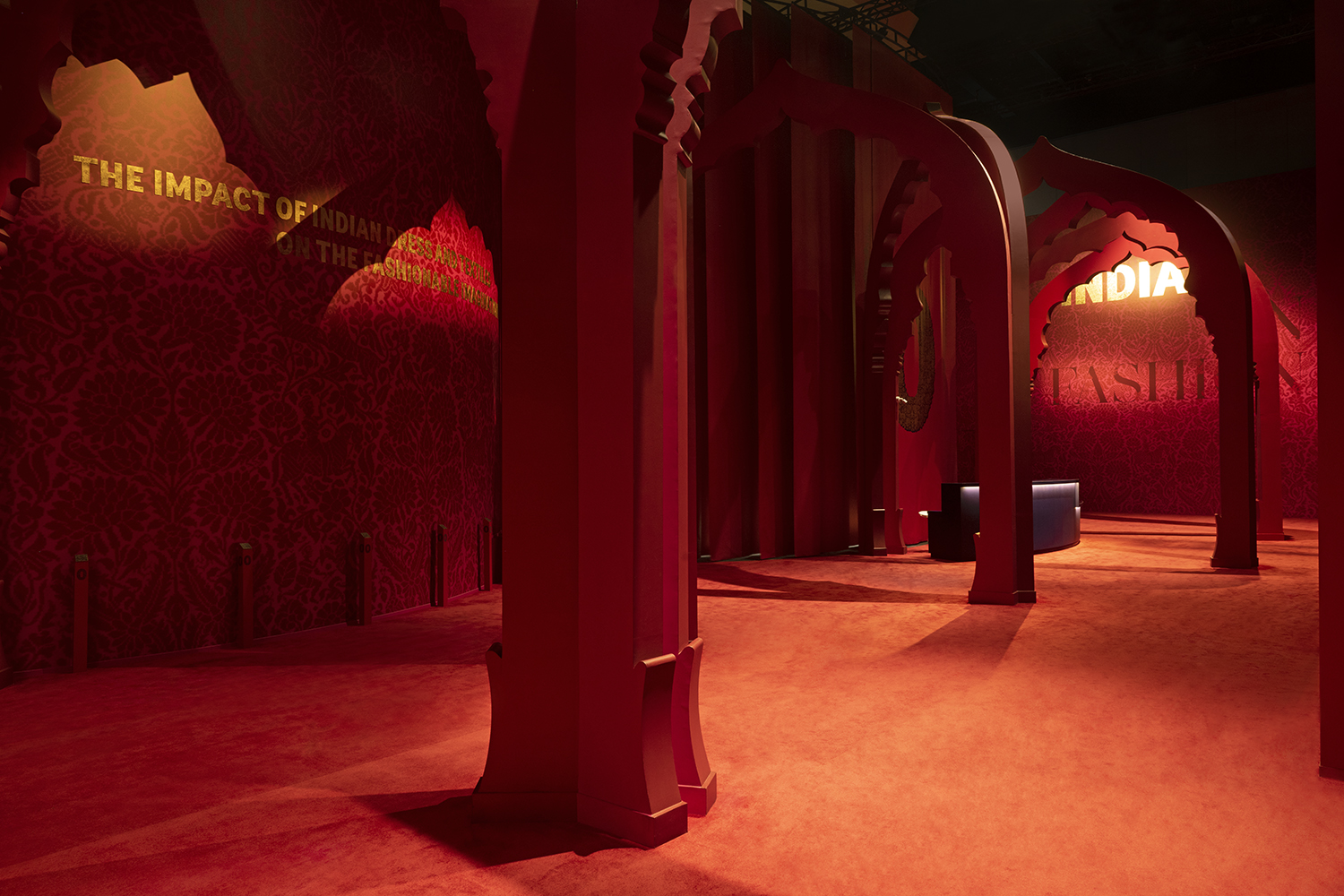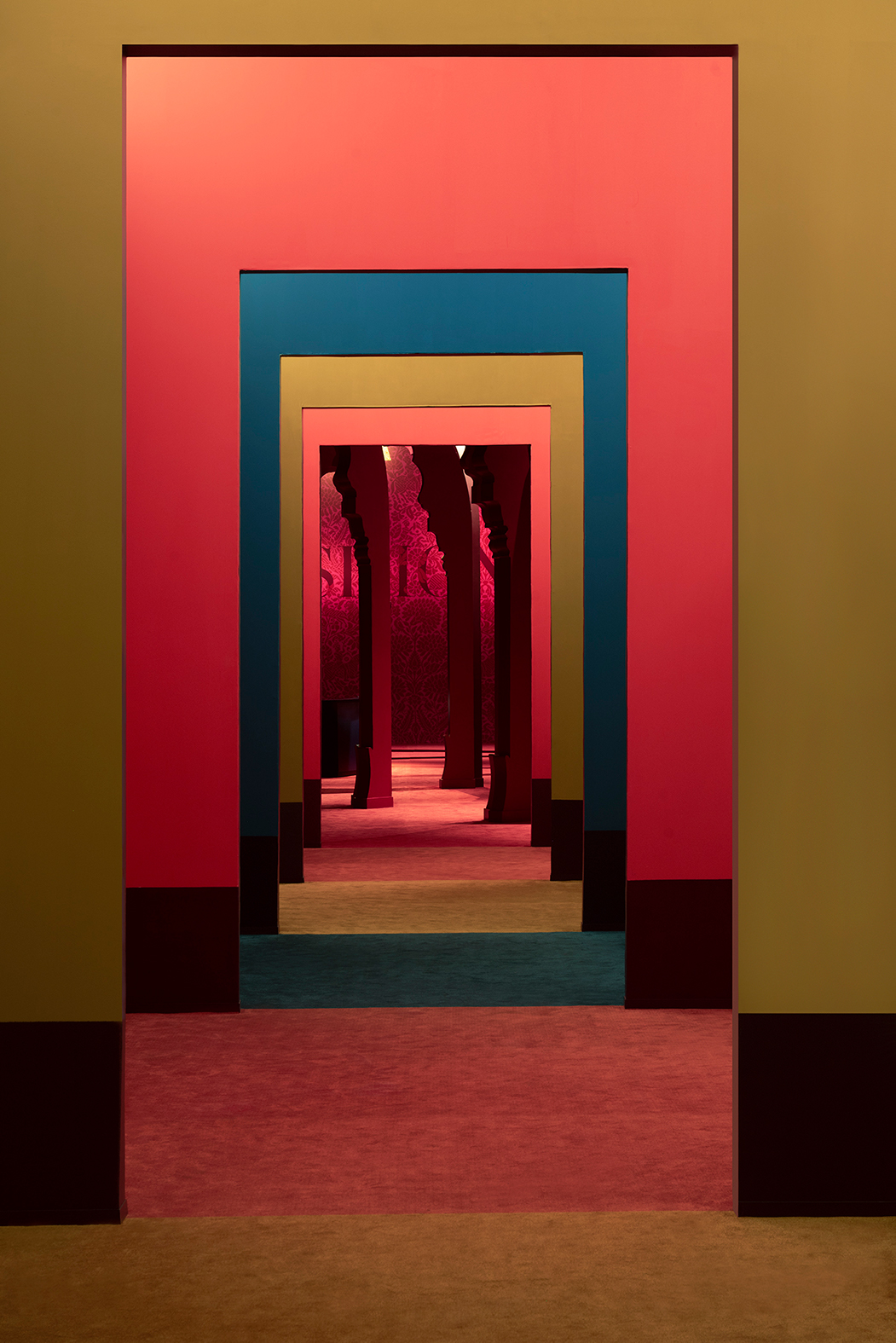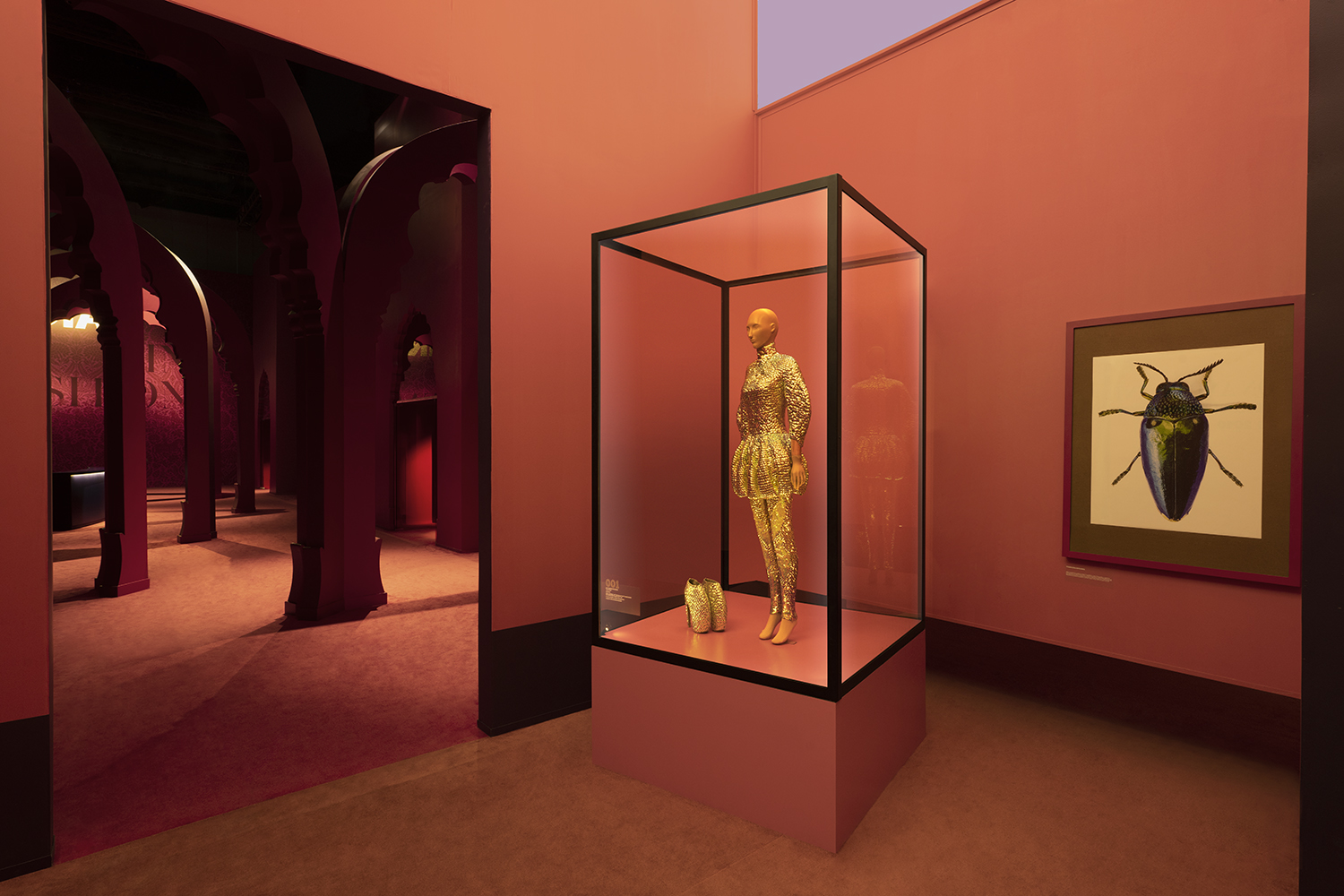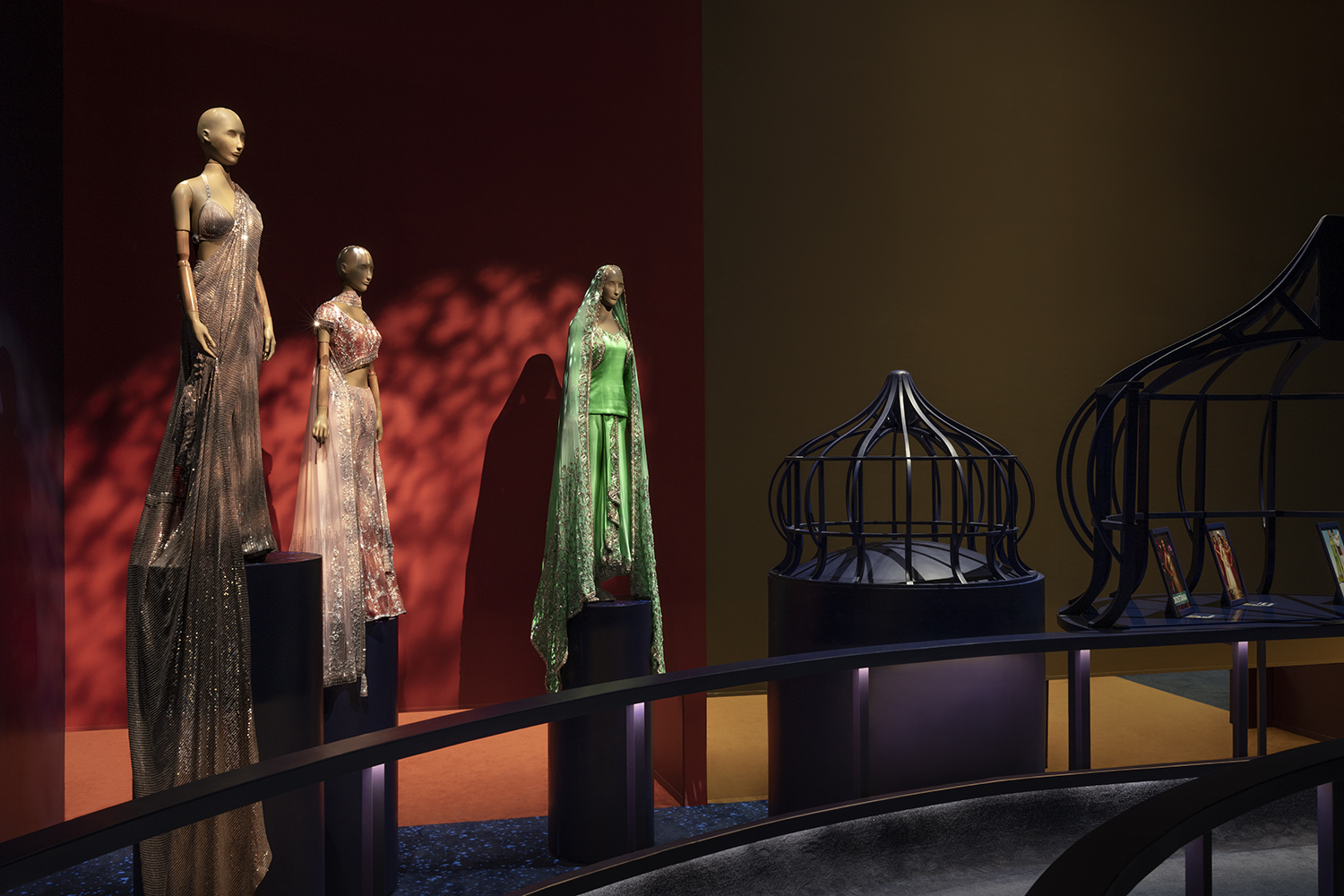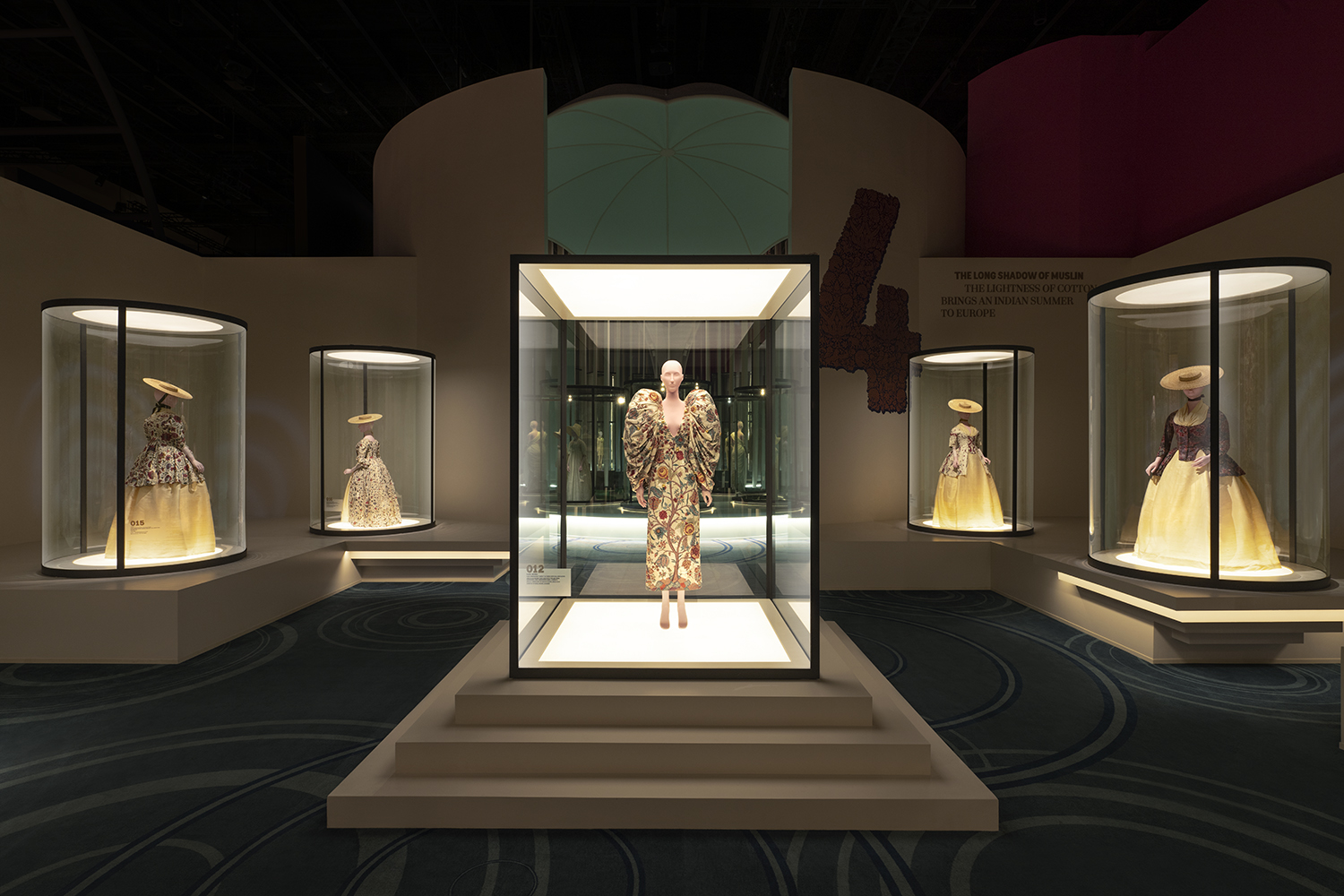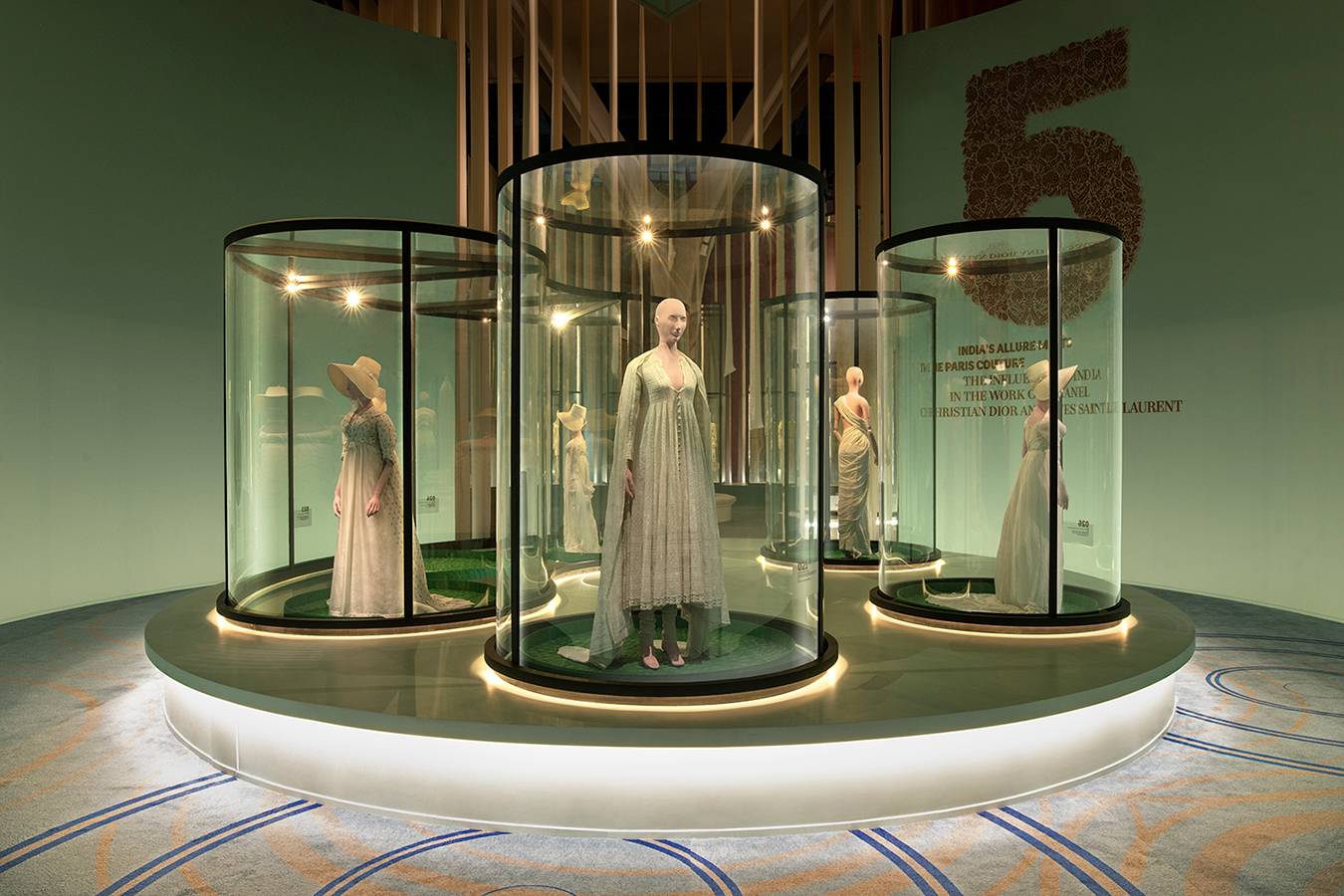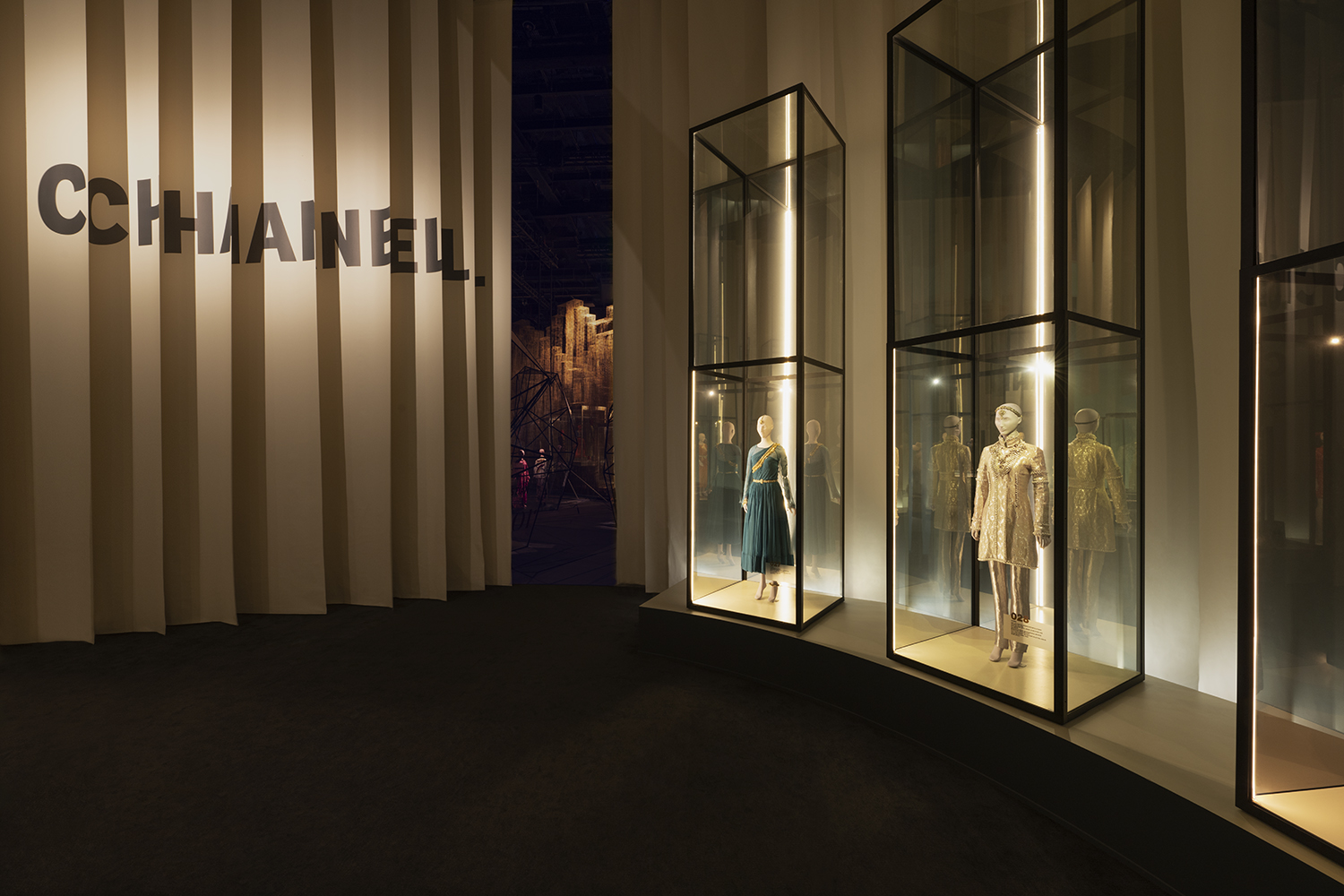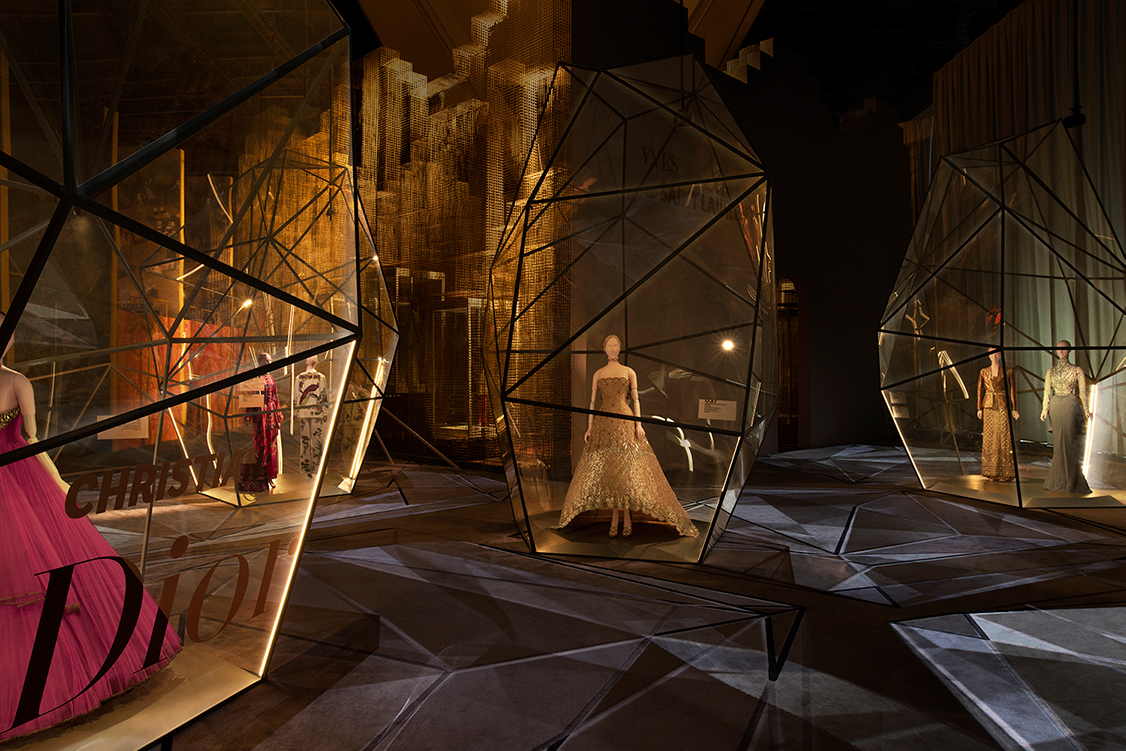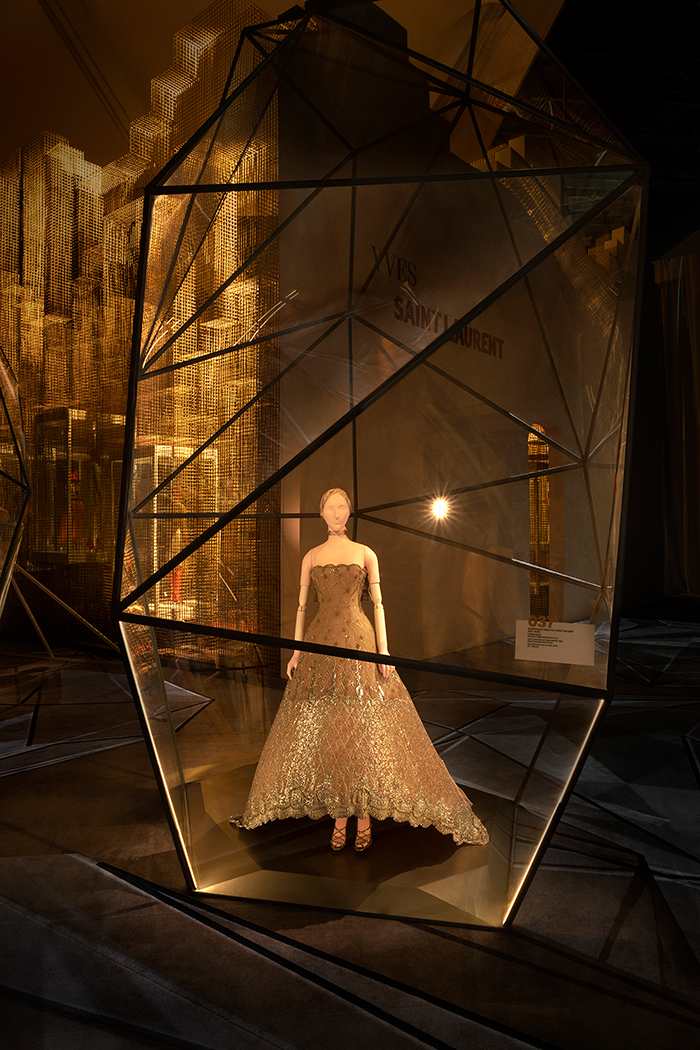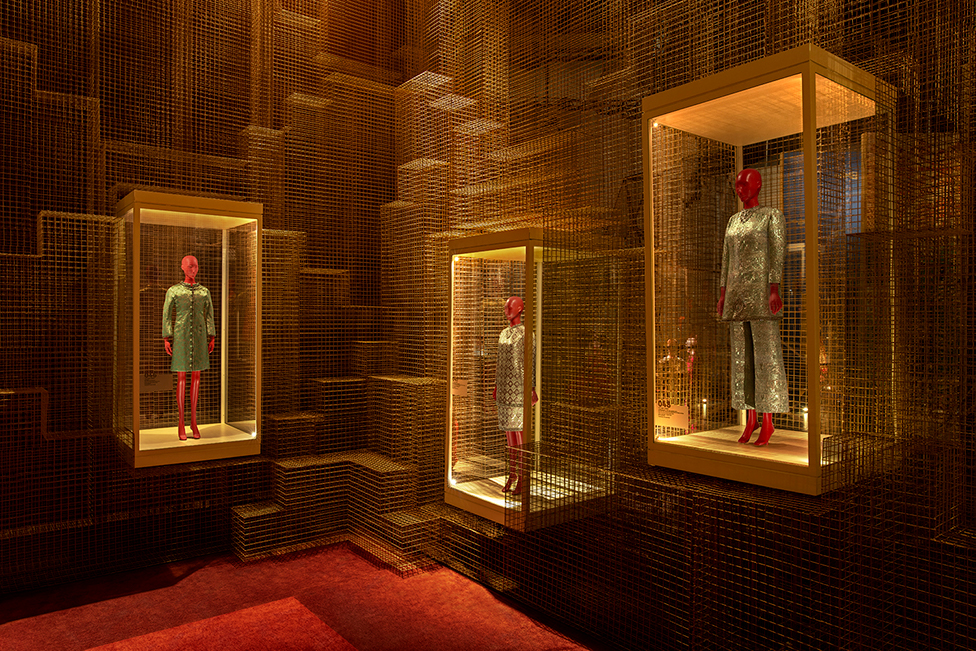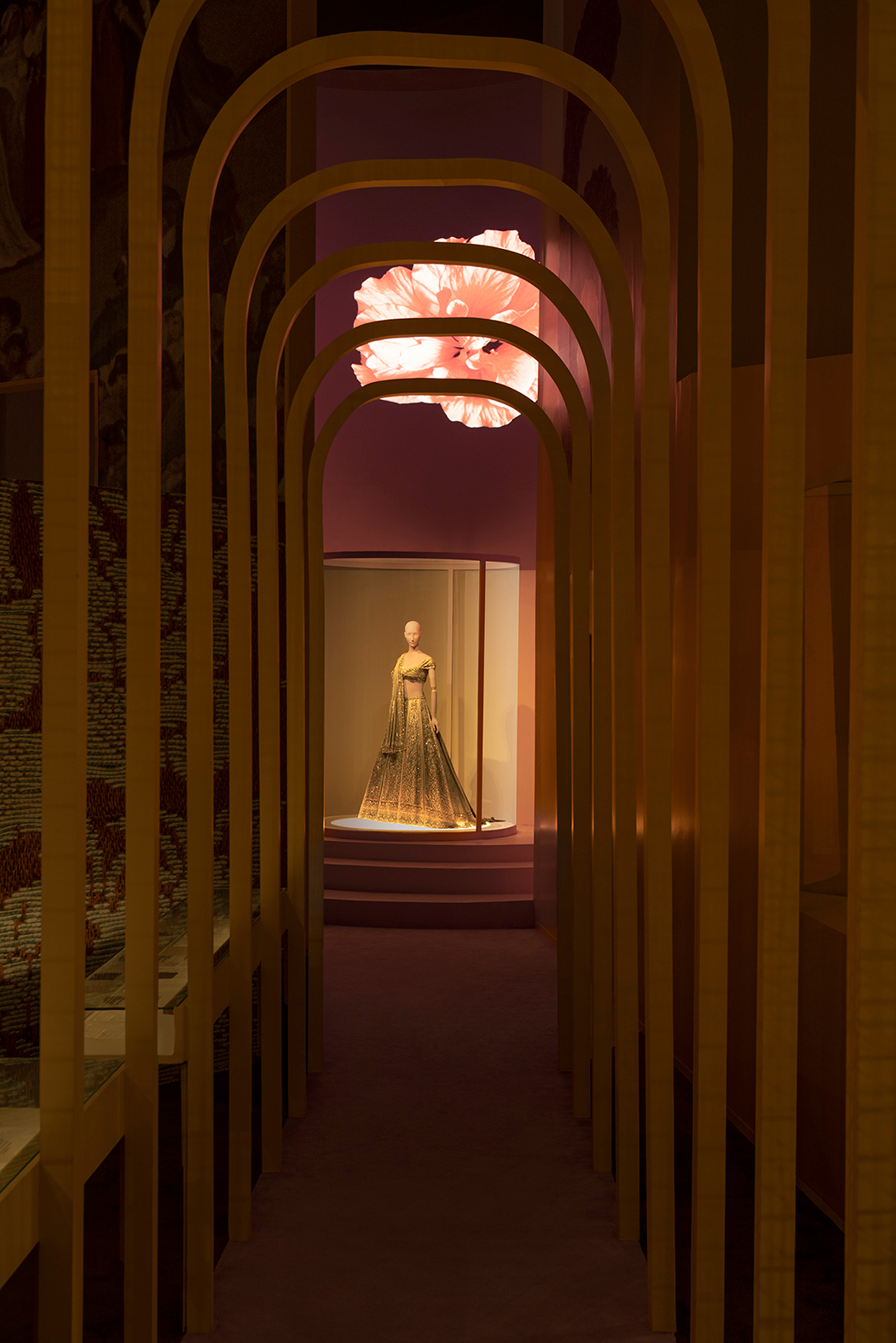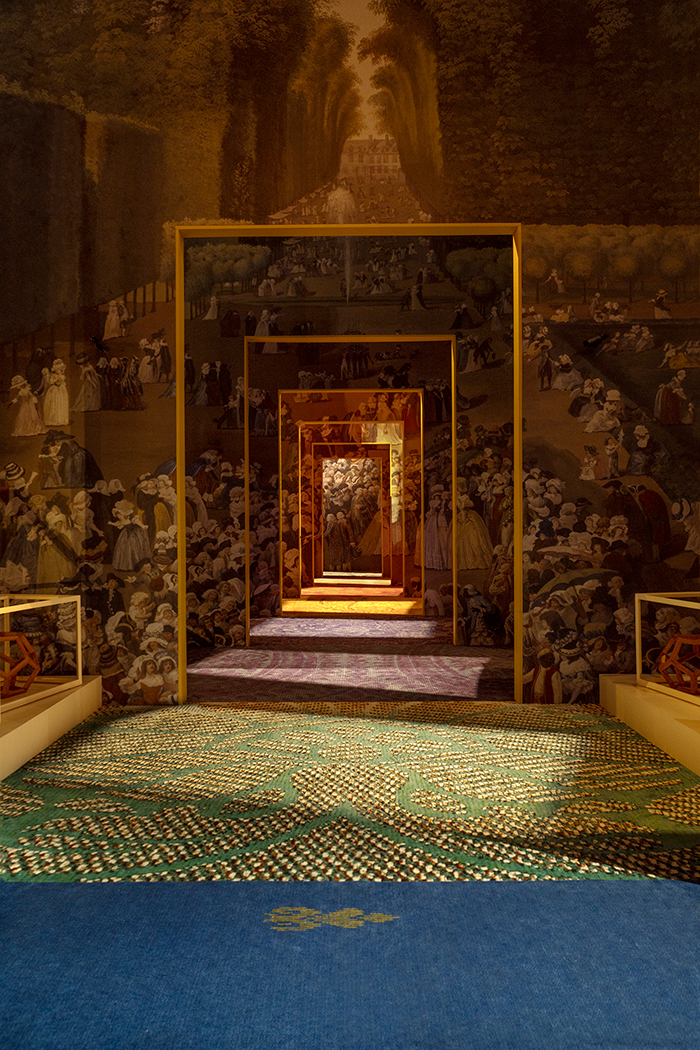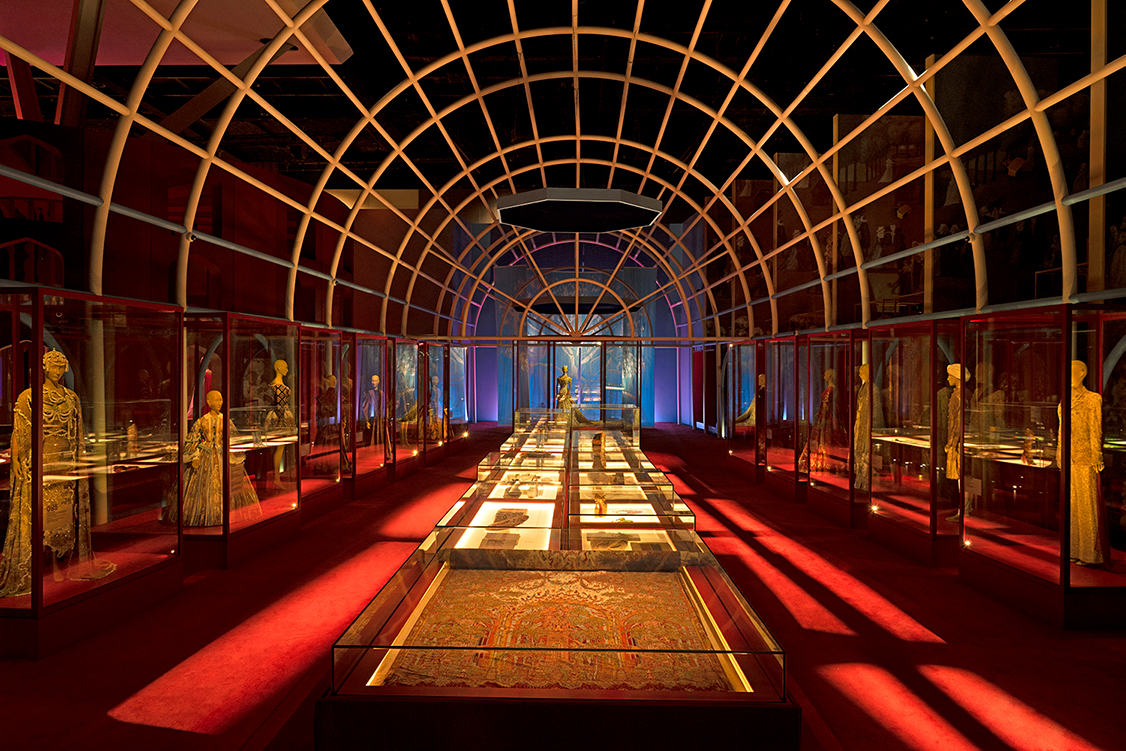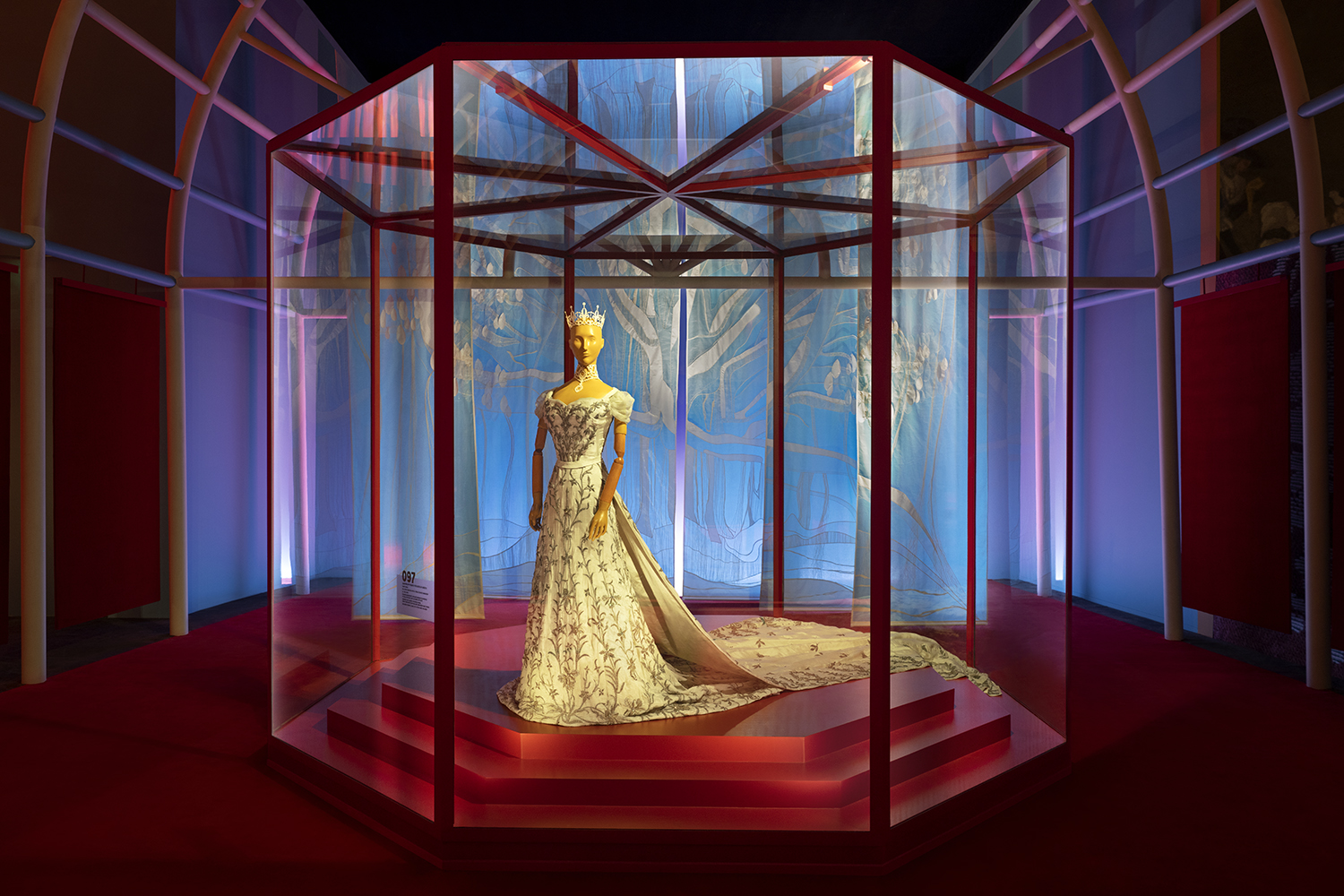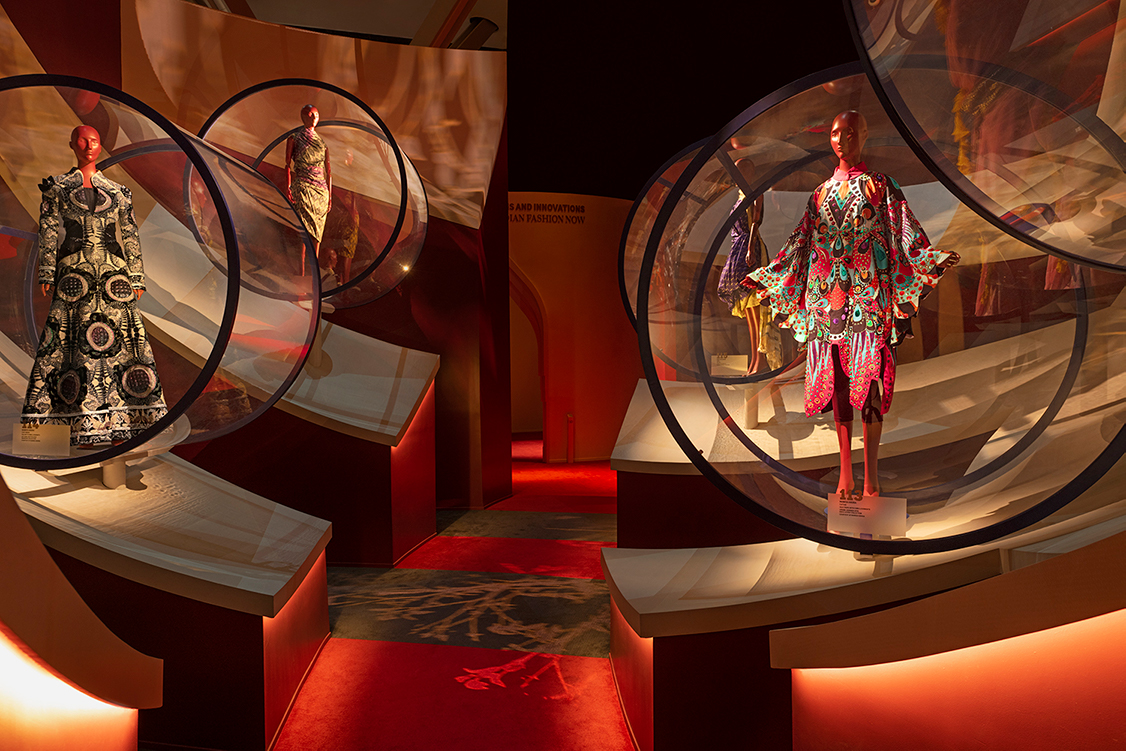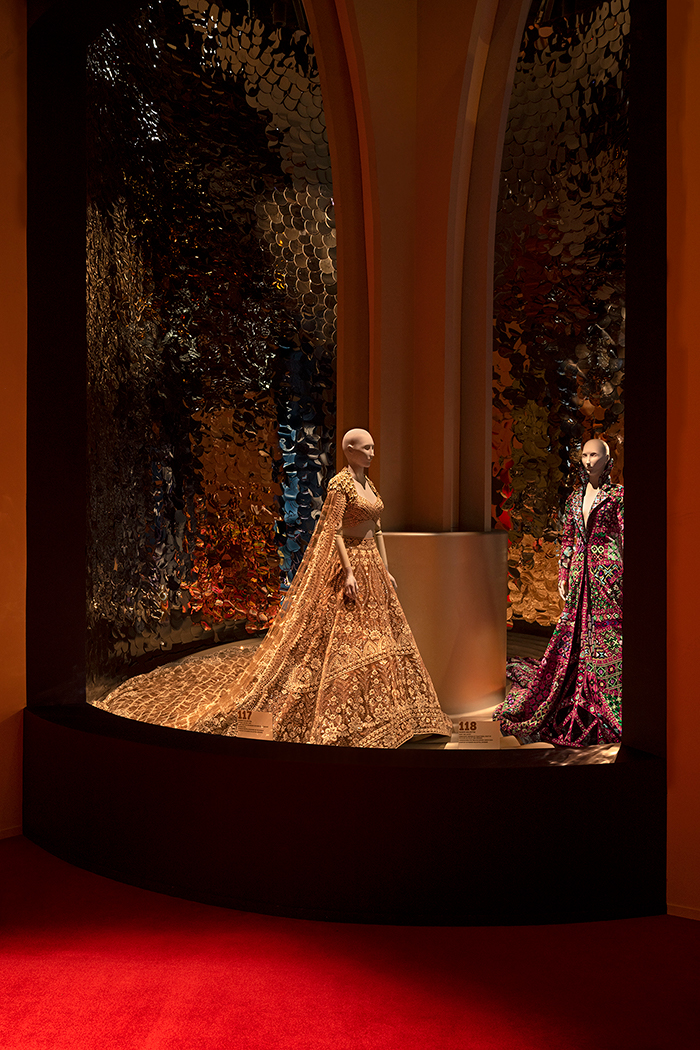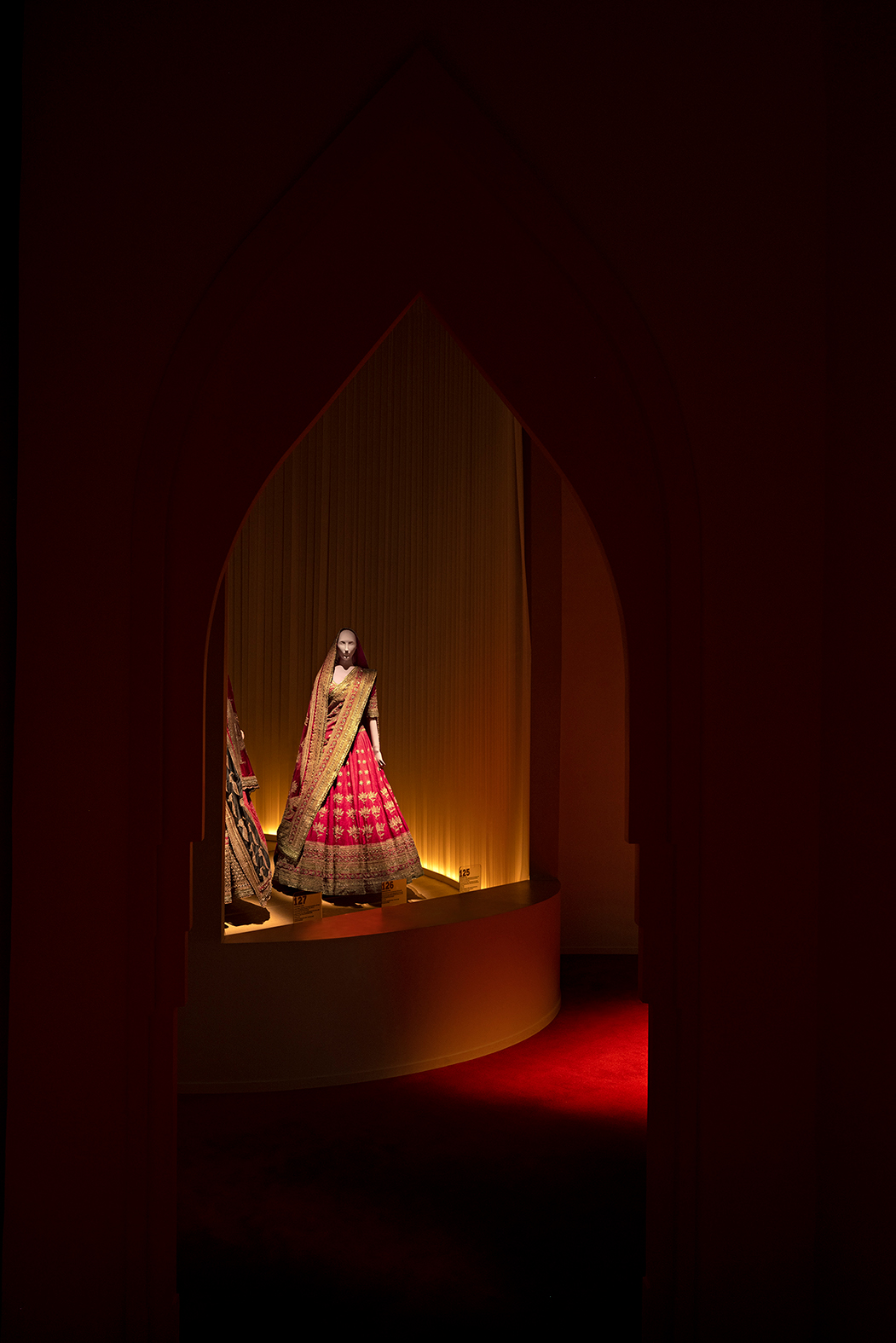Location
Nita Mukesh Ambani Cultural Centre, Mumbai
Year
2023
Status
Completed
Design Team
Ved Jirafe, Vedanth Ashok, Laksh Madaan, Vaishnavi Desai, Tanvi Pagare, Krishna Vakharia, Abhinav Jain, Shonit Kotian and Patrick Kinmoth
In 2023, under the curatorship of Hamish Bowles, designers Patrick Kinmoth and Rooshad Shroff executed the production of the India In Fashion exhibit at the Nita Mukesh Ambani Cultural Centre in Mumbai.
The NMACC is a convention centre akin to a museum; it even features humidity and temperature control, primarily utilised for the preservation of artefacts. A 50,000-square-foot open area with an imposing ceiling height of 12 metres and only four intermittently placed columns to hold it all up, it is akin to a blank canvas, allowing for a great architectural intervention within the space and a vision both the designers shared.
Bowles set the broader premise of the exhibit by grouping and categorising the displays in a manner similar to the book he authored by the same name; Kinmoth took the lead in forming a larger narrative around his text, and we worked on different elements independently before putting them together. The result was a total of 10 cohesive chapters or spaces at the venue, each bringing together a particular genre of textiles, silhouettes, embroidery, or then brands. YSL, Chanel and Dior, for example, each had their own independent chapter. Then there was one dedicated exclusively to the sari, one of the largest at the exhibit, comprising 26 ensembles.
In addition to the garments, each chapter traced a different architectural moment in Indian history; the chintz display, for instance, was placed in a space akin to a Mughal garden. The YSL chapter was fashioned like an Indian stepwell, albeit of a more ethereal nature, with a metal cage almost made to look like it was dissolving into nothingness. The hippie trail in the Fashion Takes A Trip section was modeled after the Jantar Mantar observatory in Jaipur, and there was even a recreation of The Great Exhibition of the Works of Industry of All Nations, which Queen Victoria held in Hyde Park in 1851.The chapters, therefore, all featured different architectural moments referencing actual spaces, and unlike a typical museum, which has a linear format dictated by its own architecture, one could look directly from one space into another. Not restricted to one visual, visitors could catch glimpses of the others simultaneously; as they made their way forward through the exhibit, they were allowed a new perspective on previously visited chapters as well.
Architectural and design aspects aside, India In Fashion was also intended to provide a sensory experience, allowing visitors to take in more than just the historic references and ensembles on display. The designers created spaces that helped foster the narrative -- each chapter had an immersive environment, and there was an integration of graphics, lighting, print and colour, particularly the colours of India, with an emphasis on strong pinks and reds. We had bespoke carpets laid in many sections, each with distinctive prints. Certain spaces had projectors running to further enhance the experience; the Mughal section holding the chintz garments, for example, had ripples such as those seen on a body of water, running on both the carpet and on the projector. Music and special sound effects particular to each chapter were produced as well, such as the sound of birds chirping, and Indian musical instruments.
